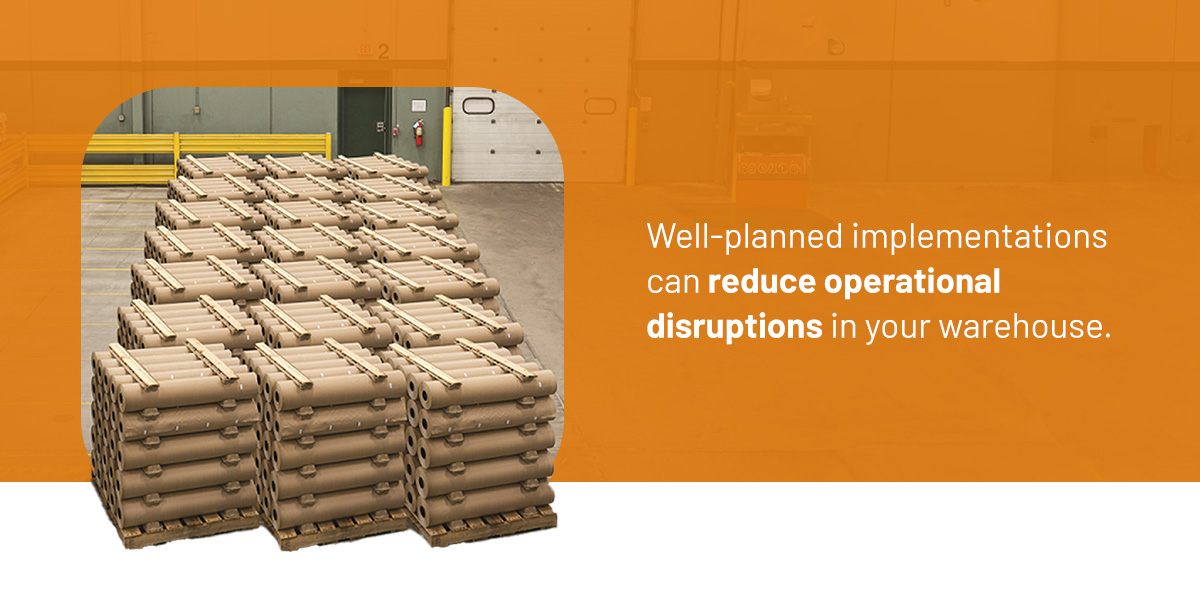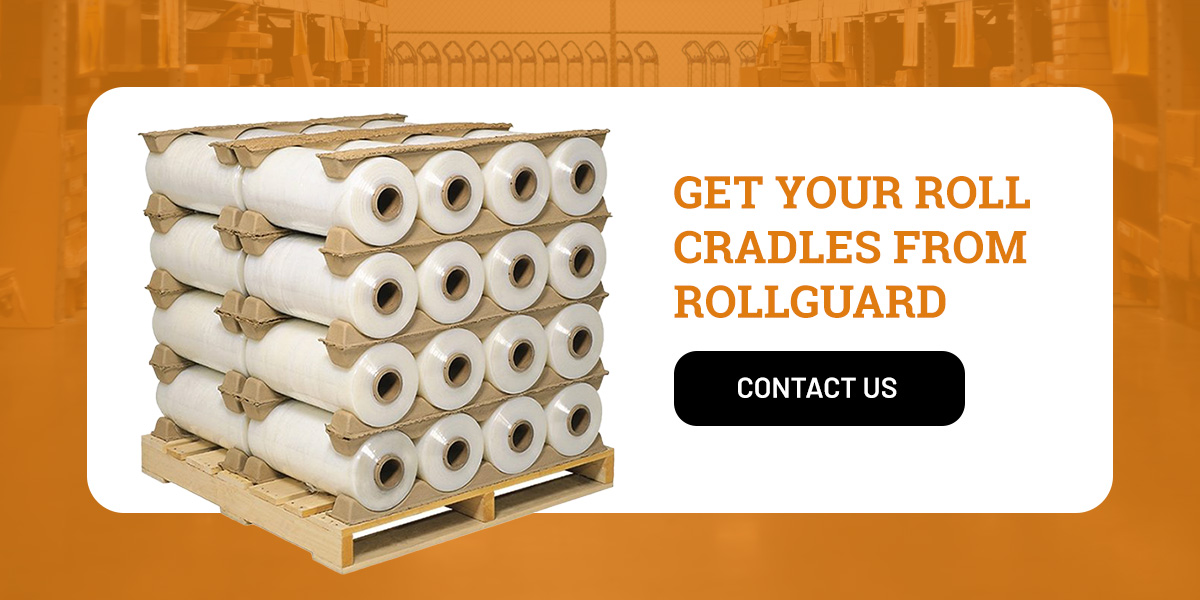Best Practices for Implementing Roll Cradles in Your Warehouse

One of the biggest struggles warehouse employees and decision-makers face is maximizing storage space, especially when dealing with roll-based products. Current storage solutions may sometimes slow picking and packing processes or compromise safe working environments. Integrating roll cradles is a great solution for these challenges.
This guide will teach you the best practices for implementing roll cradles in your warehouse. It involves several steps to ensure you use horizontal and vertical storage space more effectively, especially if your inventory is diverse in size and weight. See how roll cradles can streamline your operations, reduce retrieval times and enhance productivity.
The Role of Roll Cradles
A roll cradle is a storage solution for holding and organizing large, heavy cylindrical items, such as rolls of paper or fabric.
They typically consist of a sturdy frame with rollers or cradles supporting the items while enabling easy access. Using roll cradles in a warehouse offers several advantages:
- Space optimization: With roll cradles, warehouses can stack cylindrical items vertically, maximizing available space and freeing up floor space for other items or activities.
- Improved accessibility: Items stored on roll cradles are easier to retrieve and can reduce the time spent searching for products.
- Enhanced safety: The design provides a stable base for storing heavy cylindrical items, preventing them from tipping over or rolling away.
- Protection of inventory: Properly designed roll cradles help protect items from damage during storage and retrieval, maintaining product quality.
- Versatility: Customized roll cradles can accommodate different product sizes and types, making them suitable for various industries.
- Cost efficiency: Roll cradles’ durability and efficiency may lead to significant cost savings over time through reduced labor expenses and minimized product damage.
- Ergonomic benefit: Roll cradles minimize the need for heavy lifting, lowering the risk of workplace injuries related to manual handling.
Assessing Warehouse Needs
Assessing your warehouse’s needs, particularly when considering cylindrical products to implement roll cradles, involves thoroughly evaluating various factors. Here’s an approach to help you assess these needs effectively:
- Assess inventory: List all the types of cylindrical products you handle and measure each roll type’s diameter, length and weight to determine the appropriate roll cradle size and type required.
- Determine usage patterns: Analyze how often different rolls are moved in and out of storage, the daily or weekly average and any seasonal demand fluctuations.
- Identify storage challenges: Evaluate your current storage layout to identify any space limitations. Assess how easily employees can access stored rolls and consider any environmental conditions affecting storage.
- Consider scalability needs: Look for roll cradle designs that can be adjusted or customized to fit various sizes or types of cylindrical products as your inventory grows or changes.
Choosing the Right Roll Cradles for Your Warehouse
To make informed decisions about choosing the right roll cradles for your warehouse, consider the following designs and characteristics:
- Material: Choose roll cradles made from high-quality materials that can withstand the demands of daily use. For example, roll cradles made from recycled fiber or molded pulp offer strength and can be split apart or folded for stacking, while EPS foam roll cradles are lightweight and more ideal for sensitive products.
- Size and shape: Ideally, you should choose roll cradles designed to support static and dynamic loads. If your warehouse has unique needs, consider suppliers that offer customizable roll cradles to fit specific dimensions or handling requirements.
- Durability and cost: Determine your budget for purchasing roll cradles, including any additional costs for shipping. Reach out to several suppliers to get quotes on different options.
Implementing Roll Cradles in Warehouse Settings
Well-planned implementations can reduce operational disruptions in your warehouse. Here’s a detailed approach to introducing roll cradles:
- Proper placement and organization: Evaluate the overall layout of your warehouse and choose a dedicated space for roll cradles that’s easily accessible and minimizes interference with other operations. Position roll cradles near the workstations where workers will frequently utilize them.
- Positioning for efficient workflow: Ensure there are clear pathways for employees to move freely around the roll cradles. Place them at a comfortable height so they can load and unload without excessive bending or reaching. Organize these rolls using the First In, First Out (FIFO) method to ensure that older stock is used first to reduce waste and keep inventory fresh.
- Organizing different types of rolls: To streamline storage and retrieval, organize rolls by type, size or weight. If possible, stack roll cradles vertically or use adjustable cradles to accommodate different sizes to maximize storage capacity.
- Labeling and categorization: Create a clear labeling system that includes product type, size, weight and any relevant information, such as SKU numbers. Consider using color-coded labels or tags to categorize different types of rolls quickly.
- Integrating warehouse management systems: Use a warehouse management system (WMS) to classify, manage and keep track of inventory in roll cradles to assist with monitoring sales and determining proper storage techniques.
Safe Handling and Storage Practices
Explore the best practices for safe handling and storage:
- Loading and unloading rolls: Always use appropriate lifting equipment like forklifts to load and unload heavy rolls and pallets. Never exceed the weight limits of roll cradles and pallets to prevent tipping or collapse. Ensure pathways are clear of obstacles when loading and unloading rolls to prevent accidents.
- Stacking rolls: Stack rolls evenly and securely in cradles to prevent shifting or rolling out during storage. To maintain stability, avoid stacking rolls too high within the cradles.
- Employee training: Provide comprehensive training for workers on safe handling techniques, including proper lifting methods and equipment usage.
- Regular inspections: Establish a schedule to inspect roll cradles regularly for signs of wear, damage or instability. Look for cracks, bends, rust or other signs of deterioration and keep a log of inspection results.
- Cleaning and maintenance: Clean roll cradles regularly to remove dust, particles and spills that could cause damage over time.
- Replacing damaged cradles: Use inspection logs to identify which cradles need replacement based on wear patterns. Source high-quality products from reputable manufacturers that meet your warehouse’s needs.
Get Your Roll Cradles From Rollguard
Storing and moving cylindrical products can be challenging in warehouse operations. Roll cradles can help your team optimize space, increase accessibility and enhance daily functions. Rollguard roll cradles offer versatile and cost-effective packaging for many applications, including paper rolls, roll-up doors and machine parts.
Our roll cradles are lightweight, cost-effective and highly versatile to suit your warehouse applications. Your facility can get standard or customized options to fit your specific materials, sizes and design preferences.
Get in touch with one of our representatives to integrate roll cradles into your warehouse operations today.


Leave a Reply